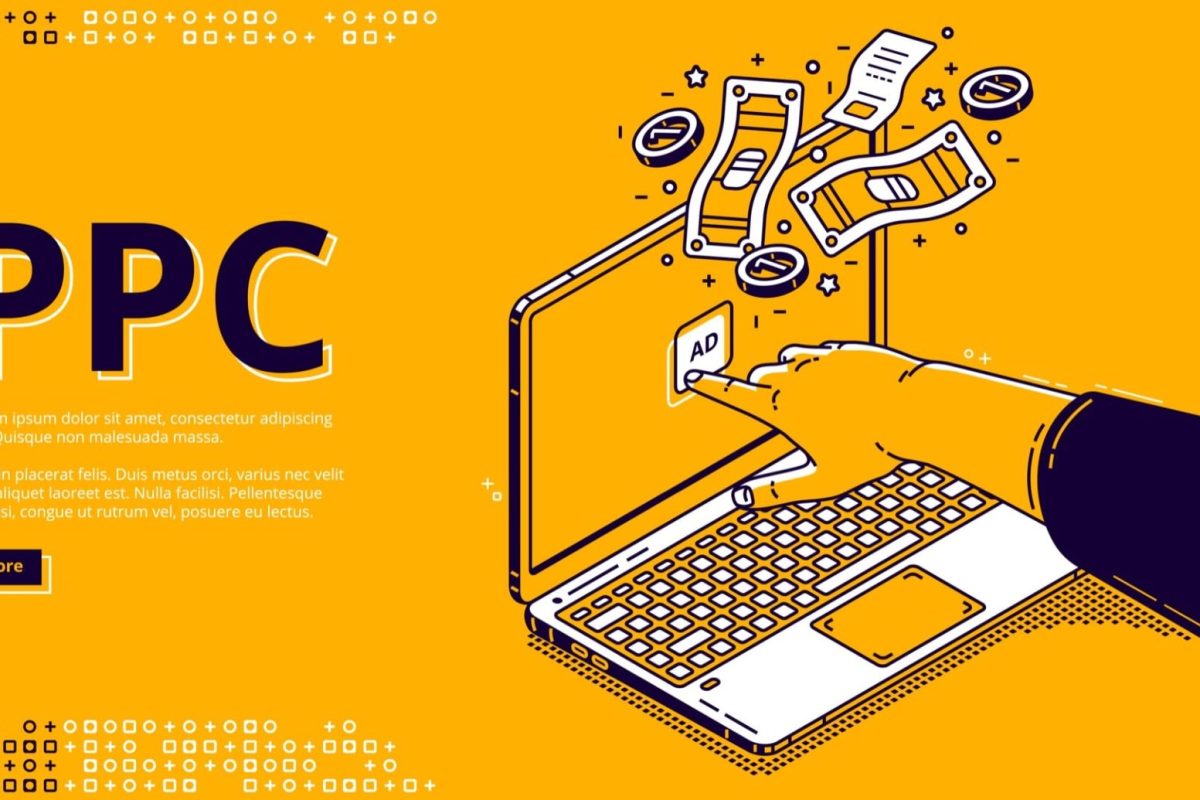Ad copywriting and optimization are crucial elements of digital marketing. They are specifically designed to grab attention and convince the target audience. Ad copywriting involves carefully choosing words and phrases that resonate with potential customers, while optimization ensures that the content effectively reaches and engages those individuals.
The impact of well-crafted ad copywriting and optimization can be seen in the performance metrics of ad campaigns:
- Increased engagement: Thoughtfully written ad copy significantly improves user interaction, such as likes, shares, comments, and other forms of engagement.
- Higher Click-Through Rates (CTR): Persuasive ad copy generally leads to higher CTR, which is an important metric for measuring how often people click on an ad after seeing it. It indicates the relevance and attractiveness of the ad to the audience.
Understanding these metrics is crucial for running effective ad campaigns. Engagement helps gauge how well the ad resonates with its audience, while CTR provides insights into both grabbing attention and motivating action.
A/B testing is a scientific method that can be used to optimize ad elements. This systematic process allows marketers to compare different versions of their ads and determine which one performs better. By focusing on specific variables and testing hypotheses, A/B testing provides concrete evidence to guide future optimization strategies.
In this article, we will explore how science can enhance the art of ad copywriting and optimization for superior campaign performance.
1. Ad Copywriting and Optimization Strategies
Ad copywriting and optimization are crucial for a successful digital advertising campaign. Creating persuasive ad copy and continually improving it can make all the difference between an average campaign and a highly successful one. Using modern technologies like AI platforms can greatly enhance these processes.
1.1 Leveraging AI Platforms for Ad Copywriting and Optimization
The Role of AI in Making Optimization Easier
AI platforms have completely changed how we write and optimize ads by automating tasks that used to be done manually. These platforms use complex algorithms to run automated split tests, also known as A/B tests, on different parts of an ad, such as the headline or call-to-action.
Benefits of Using AI for Copywriting and Optimization:
- Quicker Testing: With AI, we can test and improve ads much faster than with manual methods. This allows us to learn and adapt more quickly.
- Making Decisions Based on Data: AI uses data analysis to help us decide which ad versions are performing the best, taking away the need for guesswork.
- Scaling Up: Marketers can run tests on multiple campaigns and target audiences at the same time, without making things more complicated or needing extra resources.
Advanced Features of Leading AI Platforms:
The top AI platforms available today offer a range of features that cater to different aspects of ad optimization:
- Customizable Messaging Algorithms: These let advertisers tailor their ad copies based on what specific groups of people prefer and how they behave.
- Centralized Performance Data Dashboards: By bringing together data from various campaigns, these dashboards give us a complete view of how things are going, helping us make smarter decisions.
- Predictive Analytics: Using past data, AI can predict future trends in performance and suggest changes accordingly.
- Real-time Adjustments: Some platforms even allow us to optimize ad copies in real-time, changing things on the spot based on new data.
Ad copy variations become less about hunches or “gut feelings” and more about what the data dictates when leveraging these sophisticated tools. For example, an e-commerce brand might use an AI platform to test different versions of ad copy highlighting price savings versus product quality. The platform would then collect data on user engagement for each variant—such as likes, shares, comments—and dynamically adjust the ad spend towards the higher-performing message.
Through such strategies, businesses not only save time but also ensure their optimization strategies are grounded in solid evidence, leading to better ROIs on their advertising budgets.
Transitioning into Data-Driven Models
Now that we understand how AI platforms can improve ad copywriting and optimization by being faster, more accurate, and providing deeper insights, let’s explore how data-driven models specifically contribute to advertising success. This exploration will show us how predictive algorithms and audience insights obtained from analyzing large amounts of data can further enhance the process of creating persuasive ads that deeply resonate with our target audience.
1.2 Leveraging Data-driven AI Models for Ad Success
Ad copywriting is crucial in digital marketing, shaping how consumers perceive a brand. Good ad copy not only grabs attention but also convinces and converts potential customers. Here are some effective techniques for creating compelling ad copy:
- Using active verbs: Action-oriented language can inspire users to take action. For example, “Boost your productivity today!” is more compelling than “Productivity enhancement is possible.”
- Highlighting benefits: Consumers want to know what they’ll get out of a product or service. An ad that says “Save time with our one-click solutions” focuses on the direct benefits rather than just listing features.
- Creating a sense of urgency: Phrases like “Limited offer” or “Sale ends soon” encourage consumers to act quickly because they don’t want to miss out.
To make ad copy even better, it’s important to constantly test and refine it. This allows marketers to figure out which messages resonate the most with their audience. Here are some practical tips for optimization:
- Test headlines: Different headlines can have a big impact on how well an ad performs.
- Try different call-to-actions (CTAs): Experimenting with various CTA phrases can help determine which ones lead to more conversions. For example, comparing “Buy now” with “Get yours today.”
AI platforms have transformed the industry by using data-driven AI models to analyze large amounts of data and predict consumer behavior. These models look at:
- Audience Insights: AI can analyze complex user data to understand preferences and predict how people will respond to different ad variations.
- Behavioral Patterns: By studying how users interact with various parts of an ad, AI can suggest changes that might improve engagement.
AI plays a crucial role in identifying successful ads through methods such as:
- Continuous Experimentation: With AI, marketers can run multiple split tests at the same time and quickly try out different ad versions to find the most effective messages for different groups.
- Detailed Performance Analysis: AI platforms provide in-depth analytics that break down every aspect of an ad’s performance, helping marketers make informed choices.
For example, if a specific phrase in the ad copy consistently leads to a higher click-through rate across different demographics, AI tools can spot this pattern and recommend it as a key element for future ads.
By using these insights from data-driven AI models, marketers can streamline their testing process. They not only find successful approaches faster but also understand why certain copy variations work better, so they can replicate that success in future campaigns. This kind of analysis goes beyond basic metrics like clicks and impressions; it dives into the qualitative aspects that truly define what makes an ad appealing to its target audience.
In summary, embracing these advanced technologies allows businesses to optimize their advertising more effectively than ever before. Marketers who have these tools are in a better position to create impactful ad content that grabs attention and turns viewers into customers. As we explore other aspects of ad optimization, it becomes clear that integrating innovative strategies and technologies is essential for staying ahead in a competitive market.
2. Enhancing Engagement for Better Ad Results
Engagement metrics are crucial in determining how effective an ad is and understanding how audiences interact with the content. While click-through rates (CTR) give us an idea of immediate response, it’s important to look beyond that and consider other factors such as likes, shares, and comments. These metrics provide valuable insights into how well the ad is resonating with the audience on a deeper level.
Strategies to Boost Engagement in Ad Campaigns
Here are some effective strategies that advertisers can use to boost engagement in their ad campaigns:
1. Interactive Ad Formats
- Utilize polls, quizzes, or swipeable galleries to encourage active participation.
- Implement augmented reality (AR) experiences or gamified elements to captivate users.
2. Compelling Call-to-Action (CTA) Mechanisms
- Craft clear and concise CTAs that communicate the value proposition and urgency.
- Test variations of CTA button design and placement to identify the most effective configuration.
3. Personalization
- Leverage user data to tailor ads to individual preferences and behaviors.
- Customize messaging based on demographic, psychographic, or previous interactions with the brand.
4. Visual Storytelling
- Incorporate storytelling through high-quality images or videos that evoke emotions.
- Align visual narratives with brand identity and values to foster a stronger connection with viewers.
5. Social Proof and Influencer Collaboration
- Feature user testimonials, ratings, or influencer endorsements to build trust.
- Partner with influencers whose followers align with the target audience to extend reach.
By focusing on these strategies for CTR optimization and engagement enhancement, advertisers can create campaigns that not only attract attention but also foster meaningful interactions. This approach leads to ads that resonate more deeply with audiences, prompting not only clicks but conversations and conversions as well.
3. The Power of A/B Testing in Ad Optimization
A/B testing, also known as split testing, is a crucial method in ad optimization. It allows marketers to compare two versions of an ad and determine which one performs better. This helps in making informed decisions about which ad to use in a campaign.
Why is A/B Testing Important?
A/B testing is critical for the following reasons:
1. Experiment Design
Crafting an A/B test starts with a hypothesis. For example, you might wonder if using a green call-to-action button instead of a red one will result in more clicks. With A/B testing, you can isolate and test each element of your ad (such as images and headlines) to understand its impact on performance.
2. Statistical Significance
To ensure that the results of your A/B test are reliable and not just due to chance, they need to reach statistical significance. This means collecting enough data so that you can be confident that the differences observed between the two versions of your ad are representative of true audience behavior.
How to Conduct an Effective A/B Test
To conduct an A/B test effectively, follow these steps:
- Generate Variations: Create two versions of your ad—the original version (also known as the ‘control’) and a modified version (also known as the ‘variant’). Make changes to only one element at a time so that you can clearly see the impact of each change.
- Segment Your Audience: Randomly assign each segment of your audience to either the control or variant group. This helps avoid any bias in your test results.
- Set Parameters: Define what success means for your ad—whether it’s a higher click-through rate or more conversions—and determine how long you will run the test based on factors like traffic volume and conversion rates.
- Allocate Traffic: Decide how much traffic you want to allocate to each version of your ad. While a 50/50 split is common, the allocation may vary depending on your specific goals and sample size requirements.
- Monitor Performance: Use real-time data tracking tools to monitor how each version of your ad is performing against your success metrics.
- Analyze Results: Once the test is complete, analyze the data to identify which version of your ad met or exceeded your success parameters. You can use statistical tools to help with this analysis.
By following these steps, advertisers can systematically improve their ads, making sure that every element is optimized for maximum effectiveness. A/B testing helps bridge the gap between creativity and evidence-based decision making, leading to better campaign performance.
It’s important to remember that analyzing and interpreting the results of an ad test goes beyond just looking at numbers. It involves understanding user behavior and preferences, which we will explore in the next section.
Analyzing and Interpreting Ad Test Results
Analyzing and interpreting the results of an ad test is crucial for understanding the effectiveness of different ad variations and making data-driven decisions for optimization. By considering both performance metrics and qualitative feedback, marketers can gain valuable insights into what resonates with their target audience and refine their ad copywriting and optimization strategies accordingly.
Here are some key steps to guide you on how to analyze and interpret ad test results:
1. Define clear objectives
Start by defining the specific goals of your ad test. What metrics are you looking to improve? Are you aiming to increase click-through rates, engagement, or conversions? Having well-defined objectives will help you focus your analysis.
2. Gather performance metrics
Collect relevant performance metrics for each variation in your ad test. This may include click-through rates, conversion rates, cost per acquisition, or any other key performance indicators (KPIs) that align with your objectives.
3. Compare results statistically
Use statistical analysis methods to determine if the differences between variations are statistically significant. Tools like A/B testing calculators can help you calculate statistical significance and confidence levels.
4. Consider qualitative feedback
In addition to quantitative data, consider qualitative feedback from users or focus groups who interacted with your ads. This feedback can provide valuable insights into user preferences and perceptions that may not be captured by performance metrics alone.
5. Identify winning variations
Based on your analysis, identify the ad variations that outperformed others in terms of your defined objectives. These winning variations can serve as a benchmark for future optimizations.
6. Iterate and optimize
Use the insights gained from analyzing the results to refine your ad copywriting and optimization strategies. Implement changes based on successful variations, experiment with new ideas, and continue testing to further improve ad performance.
Remember that analyzing and interpreting ad test results is an ongoing process. Continuously monitor and evaluate the performance of your ads, iterate based on insights, and refine your strategies to achieve optimal results.
Conclusion
To stay ahead in the ever-changing world of digital advertising, it’s important for marketers to:
- Leverage Data-Driven Approach: Combine creativity with empirical insights to maximize the impact of ad campaigns.
- Utilize Tools and Resources: Explore various resources such as AI-powered platforms, industry reports, case studies, and online courses to enhance ad copywriting skills and testing strategies.
By embracing the science of ad performance and continuously refining strategies based on data-driven insights, marketers can stay ahead in the dynamic digital advertising ecosystem.



